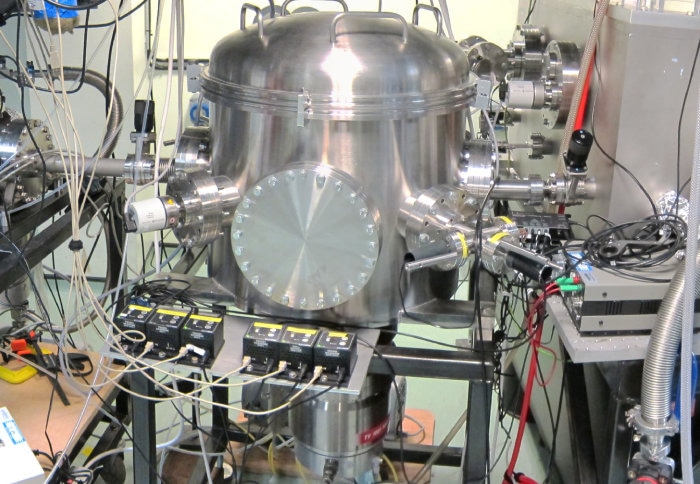May 21 2018
Thanks to a new technique for producing fast X-rays, the fleeting actions of electrons in organic materials will be a lot easier to examine.

The method means complex measurements of fast reactions will currently be possible in physics labs globally, without having to wait to use the scarce and expensive equipment. It could be used, for instance, to examine and enhance light-harvesting technologies like water splitters and solar panels.
When ‘soft’ X-rays, outside the range of ultraviolet light, strike an object, they are robustly absorbed by certain kinds of atoms and not others. Particularly, water is transparent to these X-rays, but carbon absorbs them, making them helpful for imaging biological and organic materials.
However, a challenge has been to produce very fast soft X-rays. Forming pulses of X-rays that only last one-thousandth of a millionth of a millionth of a second would allow scientists to image the very quick motions of electrons, vital for establishing how charge travels and reactions take place.
Smallest and Fastest Reaction Steps
Rapid soft X-rays have been developed with large facilities, such as multi-billion dollar costing free-electron lasers, but presently a research team from Imperial College London has produced fast and strong fast soft X-ray pulses using basic laboratory lasers.
Description of the technique, which can generate bright soft X-ray pulses lasting hundreds of attoseconds (quintillionths of a second), has been published recently in Science Advances.
With the new method, scientists will be able to observe the progress of electrons on their natural timescale, offering them a dynamic picture of the fastest and smallest reaction steps.
The strength of this technique is that it can be used by many physics labs around the world with lasers they already have installed.
This discovery will allow us to make measurements at extreme timescales for the first time. We are at the frontiers of what we can measure, seeing faster-than-ever processes important for science and technology.
Professor Jon Marangos, Senior Author - Department of Physics at Imperial
Generating X-Rays
Generating X-rays in a lab necessitate exciting atoms until they discharge photons— particles of light. Usually, atoms in a long, dispersed cloud are excited in sequence so that they release photons in ‘phase’, meaning they combine and form a stronger X-ray pulse. This is termed as phase matching.
But when trying to produce soft X-rays this way, effects in the cloud of atoms powerfully defocus the laser, disturbing phase matching.
Instead, the team realized that they required a thin, dense cloud of atoms and short laser pulses. With this arrangement, while the photons could not remain in phase over a long distance, they were still in phase over a shorter distance and for a short time. This resulted in the surprisingly efficient production of the short soft X-ray pulses.
The team further measured and replicated the precise effects that cause high harmonic generation in this situation, and from this were able to forecast the optimum laser conditions for forming a range of X-rays.
We’ve managed to look inside what was before the relatively black-box of soft X-ray generation, and use that information to build an X-ray laser on a table that can compete with football-field spanning facilities. Knowledge is quite literally power in this game.
Dr. Allan Johnson, Lead Researcher - Department of Physics at Imperial
Improving Solar Technologies
The Imperial team plan to use the method to examine organic polymer materials, specifically those that harvest the Sun’s rays to split water or to create energy. These materials are under serious investigation as they can deliver cheaper renewable energy.
However, many used materials at this time are inefficient or unstable, because of the action of electrons that are excited by light. Closer study of the fast interactions of these electrons could provide crucial understandings into techniques for enhancing catalysts and solar cells.
Photos and graphics subject to third party copyright used with permission or © Imperial College London.